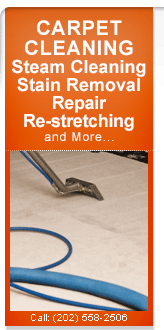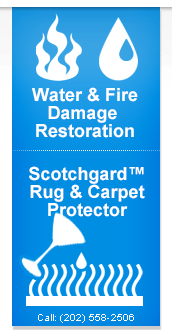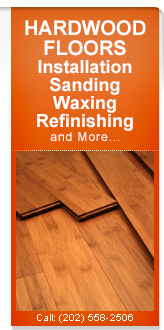 |
|
Cleaning TipsToday's carpet fibers are designed to hide soil and reflect light, and have the ability to resist soiling and stains. The effect of soil in carpet is not as visible as it is on hard surface flooring where soil remains on the surface and is easily seen. The ability of today's carpet fibers to hide soiling is a positive feature for most consumers. However, the lack of apparent soiling does not eliminate the necessity of regular cleaning. A regular maintenance program extends the life and the initial appearance of your carpet. Specific care information may be available from your carpet dealer or from a number provided by the carpet manufacturer or fiber producer. Regular Carpet Cleaning has a number of benefits that we sometimes forget: A good practice is to vacuum often the areas that receive the most traffic, such as hallways, stairs, exterior entry ways, and paths in the home where there is constant wear. Vacuum the entire carpeted area a minimum of twice per week. Removing loose soil while it remains on the surface is important so that it is not worked into the carpet pile by foot traffic. Removing embedded soil is more difficult and time consuming than removing surface soil. To remove surface soil, push the vacuum forward several feet with the pile direction of the carpet in a slow, deliberate motion and then reverse direction. Embedded soil is best removed by moving the vacuum cleaner in a slow, deliberate motion. Repeat strokes as necessary based on the traffic pattern and soiled level of the carpet. Vacuum Cleaner Selection- For maximum effectiveness, use a vacuum cleaner that has adjustable and rotating brushes that are able to loosen ground-in soil, and a strong enough airflow to penetrate to the backing, extracting all particles. The vacuum cleaner should have an enclosed, high filtration bag that limits particles from re circulating into the air. Acid SubstancesStrong acids, such as battery acids and some tile cleaning compounds, if spilled on a carpet, require prompt action to prevent serious damage. First, flush the affected area with water. Sponge up the excess and repeat the process several times until the acid has been diluted and washed away. Finally, sponge the area with a solution prepared by adding one (1) tablespoon of baking soda to one (1) quart of warm water. Rinse again. Dry the carpet as quickly and thoroughly as possible. BloodTo remove blood, use only cool cleaning solutions to prevent setting the stain. Removal of blood borne pathogens may require the assistance of a carpet cleaning professional. BurnsBurn damage can be remedied only by reweaving, re-tufting, or re-sectioning the damaged area. However, the appearance of an area of charred carpet can be improved by carefully clipping off blackened ends of tufts using small, sharp scissors. Trim surrounding tufts to minimize indentation. Dye StainsMany beverages, medicines, cosmetics, foods, and other liquids contain dyes. These dyes may be absorbed into the fibers making removal very slow or impossible. Follow dye spot removal procedures on the spot chart. If removal does not appear to be possible, call your carpet cleaning professional for advice. Sometimes the stain can be hidden by spot dyeing, re-tufting, or by repairing the affected area. Fingernail PolishUse a non-acetate fingernail polish remover. Apply a small amount of the fingernail polish remover to a white cloth, and work in gently - do not rub - working from the edges of the spill to the center to prevent spreading. Allow to remain on the spill a few minutes. Be patient, blotting the area several times. Lukewarm tap water should be used in most cases to rinse the cleaning solutions from the carpet fiber. Failure to completely rinse the solutions from the fiber may cause accelerated soiling. Whenever using a cleaning solution on your carpet, make sure you pre-test the spot removal solution (for color transfer to the cloth or damage to the carpet) in an inconspicuous area. Ink (Ballpoint Pen)Follow recommended procedures on the Spot Removal Chart to contain the spill using rubbing alcohol as the dry cleaning solvent. Rubbing alcohol (90% isopropyl) can be used as a dry cleaning solvent by applying with a cloth or towel. Do not pour rubbing alcohol directly onto the carpet. MustardSome mustard contain very strong dyes that are difficult to remove. It may be necessary to remove the stained area and reinsert an undamaged section of carpet. |
|
|
Carpet Cleaning Washington DC
Phone: 202-558-2506 | Hours: Mon-Sun 8:00am - 8:00pmCopyrights © 2004-2024 carpet-cleaning-washington-dc.com All Rights Reserved.
|
|






